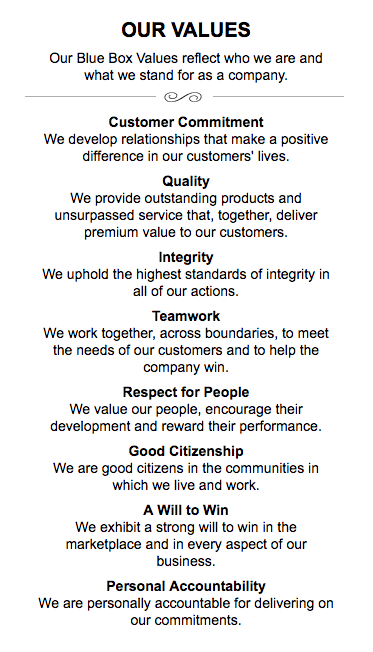What do The Great Escape, The Avengers, and A Bug’s Life have in common?
Well, apart from being awesome fun, each movie depicts how anything is possible when people (or superheroes… or bugs) pull together and unite around a common goal.
“Teamwork makes the dream work,” as they say…
Why, then, do so many workplace teams struggle to make the dream work?
Often, a big part of the answer is organizational silos.
In this post, we’ll look at why silos pose a threat to your business and what you can do to stop them from taking root.
What we’ll cover:
And 4 keys to start breaking down silos:
🔍 Are you tired of working in silos and thinking about purchasing a new communication tool to boost collaboration? Here’s a checklist to help you pick the right one for your business.
What is the “silo mentality” in the workplace?
The silo mentality crops up when employees in different departments fail to share important team knowledge with each other.
This can happen because the organization hasn’t established the right systems or communication tools to let teams work together effectively, or it might happen because of active turf battles between teams that are super protective over resources.
Whatever the root cause, you can usually tell when silos are taking hold just by paying attention to your workplace culture.
Here are some telltale signs that you’ve got a case of the silos:
- Teams duplicate effort: After spending weeks working on a new project, one of your team leaders finds out that another team has delivered on exactly the same brief as them. Facepalm.
- Managers aren’t aware of new initiatives: Two weeks before launch, your customer support team learns about a product update they could have given a ton of user feedback for.
- Things are hard to find: After searching for days for some vital piece of equipment or information, your employee finally discovers that what they need has been squirreled away by another team.
- Power struggles: Members of different teams find it hard to play nice.
- Dangerous consensus: No one seems to disagree about anything—either because disagreement is frowned upon or because employees have no incentive to shake things up.
Organizational silos are in some ways inevitable and aren’t always a bad thing. After all, each team has its own set of specialties and projects, so having full transparency across the board isn’t usually necessary.
But things start to get a little dicey when silos grow to a point where teams are focused on their duties without consideration for other teams.
The dangers of working in silos
Silos can harm your business in all kinds of ways if left unchecked. Eighty-six percent of employees1 say that poor collaboration and a lack of communication are the main causes of workplace failures.
Here are some of the biggest dangers of working in silos:
- Productivity: Silos can significantly harm your output levels. When your employees aren’t aware of some relevant information—or when they spend their time tracking it down or preventing other people from getting hold of it—their productivity metrics take a serious hit.
- Innovation: Data and discussion promote creativity. You end up suppressing innovation if you don’t encourage teams to share perspectives and cross-pollinate ideas.
- Resources: Whether it’s redundant work, time spent searching for crucial information, or duplicate orders for the same resources, silos can cause a lot of waste and unnecessary overheads.
- Morale: Silos can turn into a big problem for workplace cohesion and employee engagement. They can sour relations between teams, weaken trust in the company’s leadership, and deaden motivation for employees who feel incapable of changing the culture.
- Customer experience: Silos can lead to jarring inconsistencies in the information you present to customers, and can be a significant barrier when it comes to providing a seamless customer experience. This can really damage your bottom line, with 73% of customers willing to switch brands2 if they don’t get a consistent customer experience.
4 ways to start breaking down silos
Okay, so silos are bad. But what can you do to break them down and prevent them from sprouting up in the first place?
1. Open lines of communication
You can’t have effective collaboration without free-flowing communication.
It’s much easier for knowledge to spread when everyone has access to the most recent company developments and when even the most junior employees are free to pick the brains of C-suite leaders.
And while whiteboards and water-cooler chats still have their place, digital solutions (like an online collaboration hub) can make cross-team collaboration much more convenient.
For example, a tool like the RingCentral app makes it easy for your employees to share resources and collaborate with team members via phone, video conference calling, and team messaging:
Another way to encourage idea sharing is to set up regular meetings between teams to discuss progress and opportunities for collaboration. These meetings can be facilitated by an elected liaison to stimulate discussion.
Pixar is a company with a shining track-record of promoting a transparent and collaborative company mindset.
Pixar employees are actively encouraged to engage with anyone else in the company to discuss ideas and share feedback. According to co-founder Ed Catmull: “Anyone should be able to talk to anyone else, at any level, at any time, without fear of reprimand.”3
What’s more, the Pixar headquarters—redesigned by Steve Jobs himself—is laid out in a way that increases the opportunity for chance encounters and unplanned collaboration between employees. All the different offices are placed on the outside of a massive, open atrium where employees cross paths, gather, and mingle4.
2. Mission clarity
Clarifying your common goal—your company’s north star—is one of the most effective ways to align everyone’s priorities and promote greater workplace collaboration.
Every employee should understand the goals of the company, the reasons behind them, the plan for achieving them, and where each team fits into making that plan a success.
Seeing how everyone else contributes to the overall mission fosters a greater sense of unity and makes employees more willing to support each other.
A clear roadmap also promotes better and quicker decision making. When there’s no confusion over who’s responsible for what, there’s no argument about who has the authority to make certain calls.
It takes a sustained effort to keep everyone singing from the same hymn sheet. You can begin by defining your mission statement—a summary of your company’s purpose—but you should also view every meeting, company announcement, and project kickoff as another opportunity to reassert your mission.
One company that takes seriously its mission and vision clarity is American Express. The company’s Blue Box Values5 set out its commitment to great customer service and, crucially, barrier-breaking teamwork:
3. Leadership buy-in
It’s hard to promote a unified vision throughout the company without the full support of your leadership team.
As the company’s most influential example-setters, senior-level employees should set the standard for the rest of the business to follow. That means your executives and managers should be the first to adopt any new resource- and information-sharing approach to working.
Observing the unity and commitment of the company’s leaders, your employees will begin to embrace the culture shift and break out of the “my team” mentality.

4. Cross-team bonding
Another way to break down organizational silos is to invite members of different teams to take part in cross-team exercises (and if everyone’s remote, virtual team building activities).
One way to do this is to assemble special “launch teams”. These teams bring together the best minds from different departments and get them working on an important brief, such as a critical business launch.
Doing this gives employees the chance to see how other teams operate and lets them appreciate the crucial role everyone else plays in bringing a plan together. This makes information-guarding less likely in the long run.
Another way to break down team barriers is to train employees on collaboration skills and tasks that fall outside of their usual area of work. This will give them a better appreciation of what their colleagues do each day and will get them thinking more proactively about what information and resources they could share with other departments in the future.
Silo-breaking games are yet another way to overcome silos. These team-building games bring employees together to experiment with ideas and solve problems in a fun, low-stakes environment.
For example, in a classic scavenger hunt, employees are split into teams and given a list of items to find within a given area. If the list is long, or if the items are hard to find, employees will have to collaborate and think creatively to devise a winning game plan.
Ready to root out organizational silos?
Silos can inflict some serious harm on your business if left unchecked.
The sooner you take action to limit the damage, the better. As your business grows, silos can become harder to remove.
Breaking down silos is no mean feat. It takes time and doesn’t come cheap. But ignoring the issue will cost you far more in the long run as your productivity, employee morale, and customer satisfaction levels all begin to show cracks.
Cultivating an environment of transparency and collaboration is the single best antidote to silos. Use the tips in this post as inspiration for transforming your company’s culture for the better.
1blog.clearcompany.com/7-workplace-collaboration-statistics-that-will-have-you-knocking-down-cubicles
2salesforce.com/research/customer-expectations
3penguinrandomhouse.com/books/216369/creativity-inc-by-ed-catmull-with-amy-wallace/9780812993011
4spotlightonline.co/2017/05/31/behind-scenes-pixar-animation-studios-magic-happens
5americanexpress.com/us/supplier-management/supplier-standards/our-blue-box-shared-values.html
Originally published Mar 16, 2020, updated Sep 26, 2024







